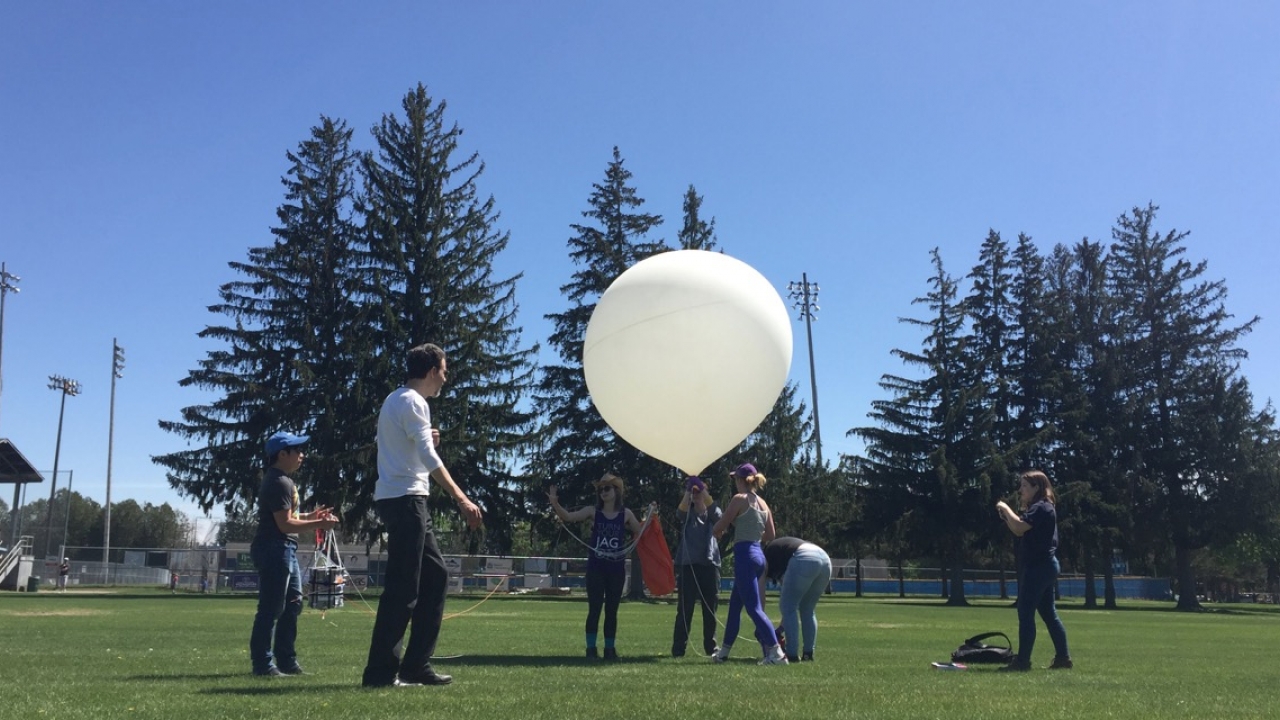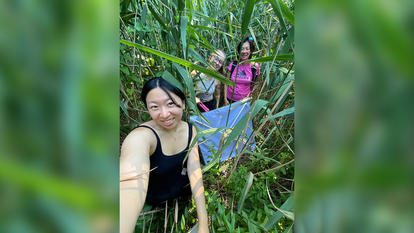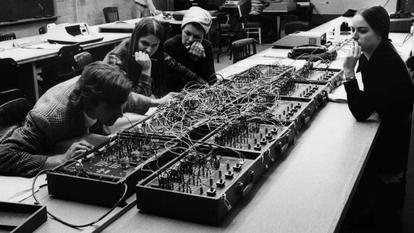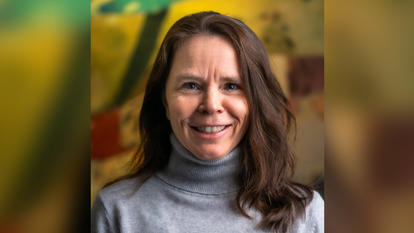Wellesley Students Explored the Edge of Space with a High-Altitude Balloon

To explore and measure the properties of Earth’s atmosphere, last spring a team of Wellesley students from across class years and majors built and tested a research payload that included miniature computers, sensors, cameras, a GPS receiver, and a Geiger counter. They attached the pay load to a high-altitude balloon and released it into the atmosphere.
The group included Rebekah Albach ’20, Claire Cannatti ’20, Jessie Feng ’19, Jenny Gubner ’18, Ingrid Henderson ’19, Carol Hundal ’18, Catherine Nicoloff DS ’19, and Diana Paulsen ’21, who were taking a course, Hands-on Planetary Exploration, taught by Wes Watters, associate professor of astronomy. The class is a hands-on, team-oriented, project-based class in which students build instrumented probes to explore challenging environments. (A second group worked on a land-based rover project.)
 The goal of the balloon project was to measure characteristics of the atmosphere, such as how pressure, wind speed, and temperature depend on elevation. The onboard Geiger counter also measured high-energy radiation generated by cosmic rays, which are subatomic particles that shower into Earth’s atmosphere from deep space. The project required two months of careful planning, modeling, and development. Some of the technology was based on work by Watters’ colleague William Church of White Mountain Science Inc.
The goal of the balloon project was to measure characteristics of the atmosphere, such as how pressure, wind speed, and temperature depend on elevation. The onboard Geiger counter also measured high-energy radiation generated by cosmic rays, which are subatomic particles that shower into Earth’s atmosphere from deep space. The project required two months of careful planning, modeling, and development. Some of the technology was based on work by Watters’ colleague William Church of White Mountain Science Inc.
The group launched the balloon in May from a site in Saratoga Springs, N.Y. As they readied the launch, they listened to Elton John’s “Rocket Man.”
After the launch, Watters and his students split up into three crews and headed toward the anticipated landing spot—predicted using atmospheric wind models—guided by decoded radio transmissions from the balloon.
“We set our destination in Google Maps as Jaffrey, N.H.,” said Albach. “Within 20 minutes of leaving the launch locations I had lost all radio signals.”
Fortunately, the teams in the other vehicles tracked the balloon to 90,000 feet, at which point the payload automatically detached and descended with a parachute. Revised calculations directed them to Lowell and then to Nashua, N.H.
With the radio signal spotty, and little power remaining to run the computers needed for tracking, the outlook was dim. The team didn’t know exactly where the payload would land.
“I think everyone was getting tired and hungry at that point, and my laptop had reached 10 percent charge,” Albach said.
Suddenly, her team picked up a signal that, while faint, was strong enough to direct them to a state forest outside Nashua. Just as dusk fell, and after a hike through the woods, they found the payload dangling from a tall tree. Relieved, they wirelessly downloaded the data from the payload computers.
 Watters, winner of a 2018 Pinanski Prize, called the project a huge success. “Not everything worked exactly according to plan, but the students persevered and overcame challenges they didn’t anticipate,” said Watters. “The payload chase was a great adventure.”
Watters, winner of a 2018 Pinanski Prize, called the project a huge success. “Not everything worked exactly according to plan, but the students persevered and overcame challenges they didn’t anticipate,” said Watters. “The payload chase was a great adventure.”
Nicoloff’s contribution was the Geiger counter, which she built from scratch. “My job was to characterize high-energy radiation and how it depends on altitude,” said Nicoloff, who recently received the 2018 Barry Goldwater Scholarship for physics research. “We had a successful launch and obtained excellent data, not only about radiation in the atmosphere, but the structure of the atmosphere itself. This project was a thrill from beginning to end.”
Photo: Wellesley students in Astronomy 202 add the finishing touches on their semester-long research project before its launch. The components include a high-altitude balloon and a research platform of their own design.
Photo (inset): Astronomy 202 students work on their research device before its launch into the atmosphere.
Photo (inset 2): A photo captured “from the edge of space” by the student’s research device.



